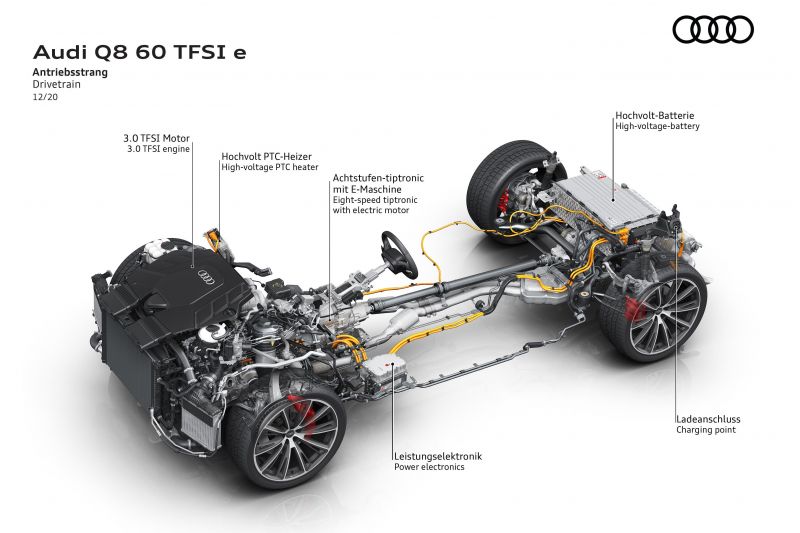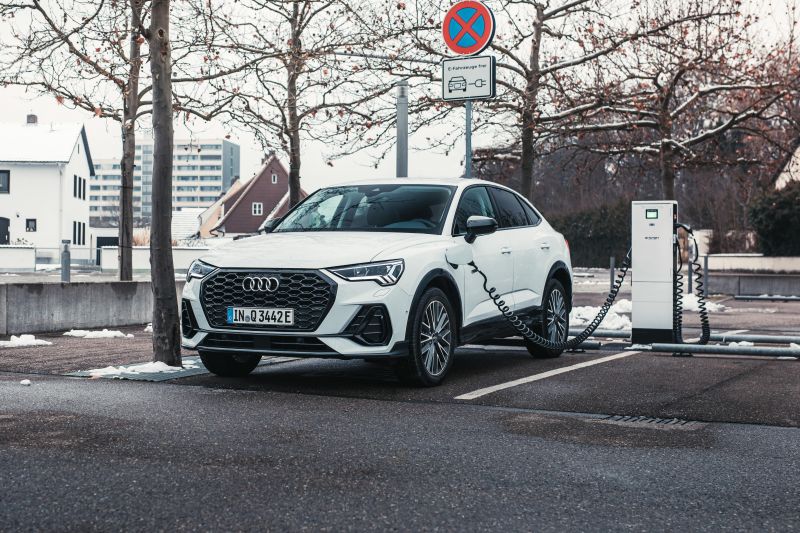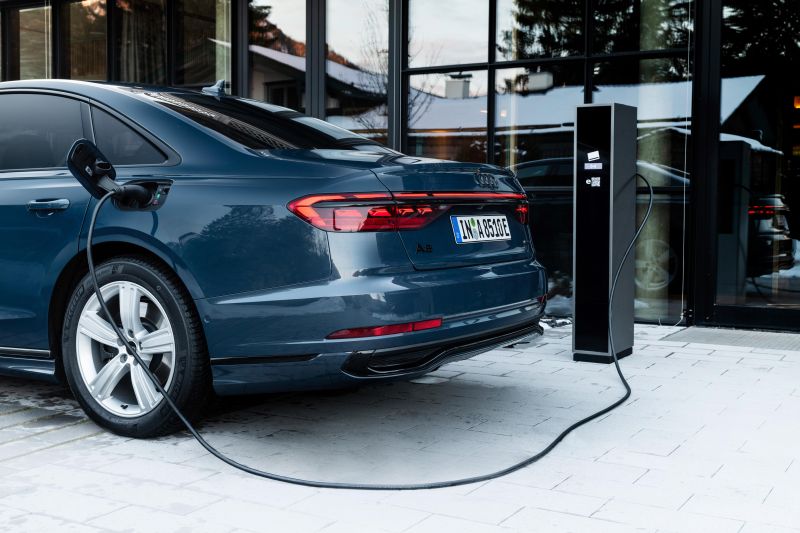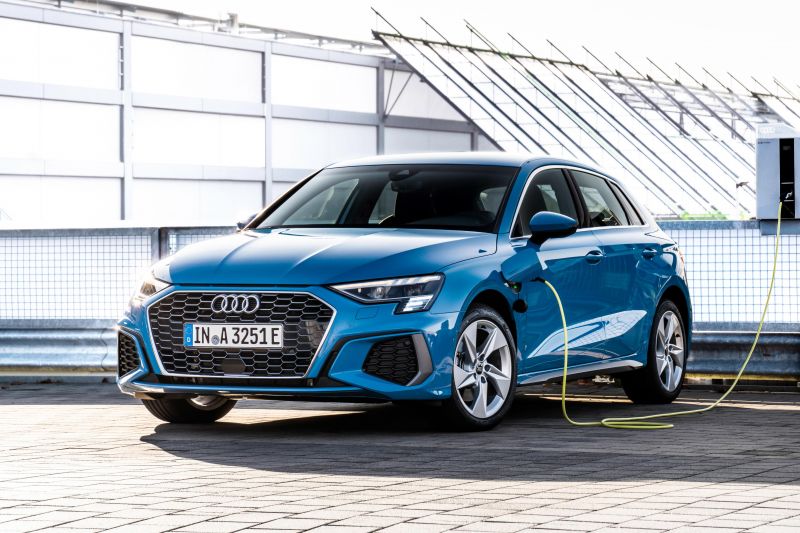Audi has a wave of new products coming, and the marque’s local arm is keen for new opportunities such as adding more plug-in hybrids as variants of existing or all-new models.
Speaking with CarExpert at the Australian media launch of the Q5 55 TFSI e plug-in hybrid, Audi Australia’s national product manager Matthew Dale said the company is moving into an “extremely exciting” period.
“The next 24 to 36 months for us, inclusive of [Q4 e-tron and Q6 e-tron] is going to be extremely exciting. Our model lifecycle at the moment is generally seven to eight years, so everything we launched in 2020 will have facelifts or there’s all-new models coming in,” Mr Dale said.
“So that’s going to broaden the scope, and right now is probably the most exciting opportunity we have as a brand in Australia because we’ll have the freshest range moving forward in the coming 24-36 months with either new variants of current models or all-new models.”
While Mr Dale didn’t go into specifics – a lot of the new cars haven’t been revealed yet – he did hint at opportunities around electrification, such as adding more plug-in hybrids to existing model lines. He also mentioned that education around different powertrain types is key, as the brand plans to continue offering choice.
“PHEV, as an example – Q5 and Q8 – they’re new variants of existing model lines that complement the current structure. We’re looking at opportunities and obviously listening to our customer base, I think everyone is looking at electrification moving forward,” Mr Dale continued.
“For us, education is absolutely paramount to any new technology. We’ve obviously had plug-in hybrids in the past with the A3 e-tron and Q7 e-tron, and that was merely to test the market and gain feedback – they weren’t meant to be a volume push by any means… we were trialling our new technology because it was available to us at the time.”
“PHEVs are meant to complement the range and they’re definitely part of our electrification roadmap.”
When asked about EV advocates and rival manufacturers labelling plug-in hybrids as a “stepping stone” that’s schools already past its time in Australia, Mr Dale said the tech appeals to specific cross sections of Audi’s buyer demographic and the company plans to cater for that with as much choice as it can.
“Are [PHEVs] a stepping stone? I wouldn’t say so. I’d say there is a specific customer for each one of our models, and we’ve got such a broad model range that the PHEVs are there to complement what is already in the range and offer customers choice.”
“That’s the biggest thing with a lot of the positioning that we do with any model; it’s about customer choice, listening to our customers and exemplifying that through our model portfolio,” Mr Dale added.
As for what could be on the cards for Australia, Audi has quite an expansive global portfolio available to it.
No less than eight of Audi’s existing model lines offer plug-in hybrid options – some with two power variants or multiple body styles. These include the A3, A6, A7, A8, Q3, Q5, Q7 and Q8.
Mr Dale’s comments around facelifted models point to the popular A3 and Q3 being next in line, given both are due for mid-life facelifts imminently. The Q3 in particular was first revealed in 2018 and has been on sale in Australia since 2019.
Both feature the same 1.4-litre turbocharged plug-in hybrid system as the Cupra Leon and Formentor VZe, combining a 110kW/250Nm TFSI petrol engine with an 85kW/330Nm electric motor for system outputs of 180kW and 400Nm in 45 TFSI e guise.
The Q3 and Q3 Sportback 45 TFSI e dash to 100km/h from rest in 7.6 seconds, and consume 1.4-1.7L/100km on the combined WLTP cycle. Electric range is rated at 50-51km according to WLTP standards. The A3 Sportback 45 TFSI e, meanwhile, can dash to triple figures in 6.8 seconds and travel up to 63km on a charge.
Audi also offers a lower-output 150kW/350Nm A3 40 TFSI e that can travel up to 67km per charge (WLTP), though performance drops to 7.6s for the 0-100 dash.
The Volkswagen Group has confirmed a new plug-in hybrid system for the next-generation Volkswagen Tiguan, which subs in a newer petrol engine and a bigger battery pack, with maximum power upped to 200kW depending on variant and electric range of around 100km per charge.
We may similar figures from the facelifted A3 and Q3 TFSI e models, and should they come to Australia will be fairly unique in market – rivals have moved away from PHEV technology in compact segments. Volvo also exited the market with the XC40 Recharge PHEV, instead focusing on the aelectric version sourced from China.
Elsewhere in Audi’s global line-up, the A6 and A7 offer 50 TFSI e and 55 TFSI e variants with either 220kW or 270kW from a 2.0 TFSI-based plug-in hybrid – just like the Q5 – while the larger A8, Q7 and Q8 are available with 3.0 TFSI-based plug-in hybrid systems with up to 340kW.
The A4 and A5 don’t currently offer anything beyond 48V mild-hybrid technology, though the next generation of Audi’s mid-size passenger vehicles is expected to offer numerous PHEV options, including a plug-in hybrid RS4/RS5 performance hero.
Should Audi Australia be able to get a hold of more TFSI e plug-in hybrids as well as the Q4 e-tron and Q6 e-tron pure-electric SUVs, it would give the German marque the most extensive electrified portfolio within Volkswagen Group Australia, and amongst most established automotive brands locally.
Stay tuned to CarExpert for the latest, and share your thoughts with us in the comments!
MORE: Everything Audi A3 | A4 | A5 | A6 | A7 | A8 | Q3 | Q5 | Q7 | Q8




